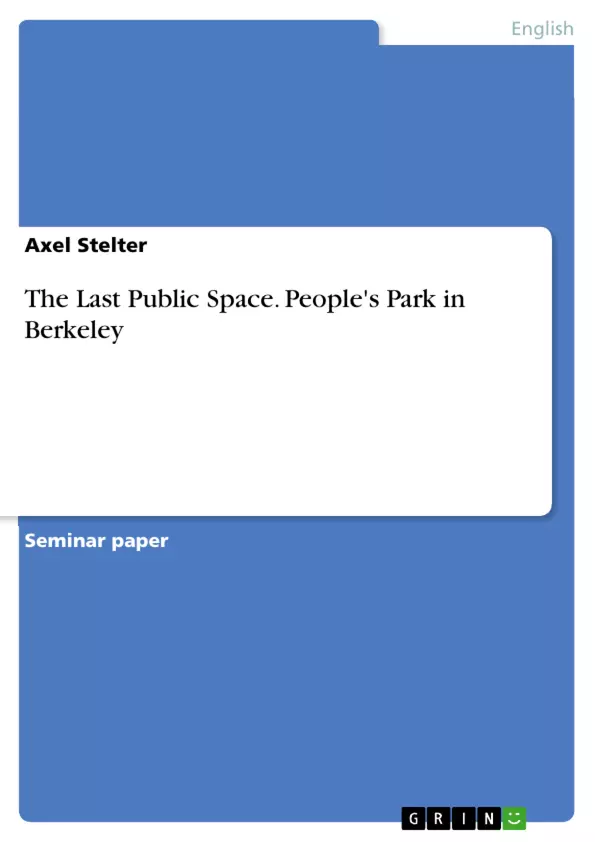During the violent turbulences of the Free Speech Movement in the 1960s, about 100 Berkeley residents captured a piece of corporate land, owned by the University of California, at 2100 Haste Street. They brought flowers, trees, shovels and food to the site. The people of Berkeley built themselves a park on a piece of land which did not belong to them and simply justified their actions to the city and university with the words: “We are using the land better than you used it: It’s ours!”(Frank Bardacke). Besides the political impact of this event, the residents of Berkeley created a public space out of corporate land with their own hands and their own ideas. Their park was supposed to symbolize everything they had fought for in the last decade, especially the right to free speech and their idea of the equality of all humans. The idea that all humans, whether black or white, rich or poor, should be treated and seen equally lives on the idea of a public park like the People’s Park in Berkeley.
Public spaces in generally defined as areas or places that can be accessed by all people. There are no restrictions on gender, race or socio-economic status. Public spaces do not require any permission or fees to be entered. Many streets, parks and public buildings are public spaces. [...]
Inhaltsverzeichnis (Table of Contents)
- People's Park – the Last Public Space
- Activism in the Park
- People's Park Symbiosis with the Community
- Open Access
- Berkeley's “unreal” Public Spaces in Contrast to People's Park
Zielsetzung und Themenschwerpunkte (Objectives and Key Themes)
This research paper explores the significance of People's Park in Berkeley, California, as a symbol of public space and its role in fostering activism and community engagement. The paper argues that People's Park embodies the ideals of open access, equality, and public rights in an urban environment increasingly defined by privatization and restrictive public spaces.
- Public Space and its Meaning
- Activism and Protest in Public Spaces
- Community Building and Socialization
- Open Access and the Rights of the Homeless
- Contrasting "Real" and "Unreal" Public Spaces
Zusammenfassung der Kapitel (Chapter Summaries)
- People's Park – the Last Public Space: This section introduces People's Park as a symbol of public space, born out of the Free Speech Movement in the 1960s. It contrasts the park's idealistic vision of open access and equality with the increasing privatization of public spaces in the United States.
- Activism in the Park: This section examines the history of activism and protest within People's Park, highlighting the 1991 riots surrounding the construction of volleyball courts. It argues that the park's open accessibility and commitment to public rights fueled the protests and ensured its continued existence.
- People's Park Symbiosis with the Community: This section explores how People's Park contributes to the Berkeley community through its community gardens, public events, and social gatherings. The park's fostering of communication and community engagement reinforces its status as a vital public space.
- Open Access: This section focuses on the open accessibility of People's Park, emphasizing its importance as a safe haven for homeless individuals. The author cites W. G. Moseley's argument that the park's public rights extend to the most disenfranchised members of society.
Schlüsselwörter (Keywords)
This research paper centers on the concept of public space, exploring its relevance in the context of People's Park, Berkeley. Key terms and themes include: public space, activism, community, open access, homelessness, privatization, and urban environments. The paper examines the significance of People's Park as a site for protest, social engagement, and the embodiment of public rights within a broader context of social and political change.
- Citation du texte
- Axel Stelter (Auteur), 2008, The Last Public Space. People's Park in Berkeley, Munich, GRIN Verlag, https://www.grin.com/document/120237



